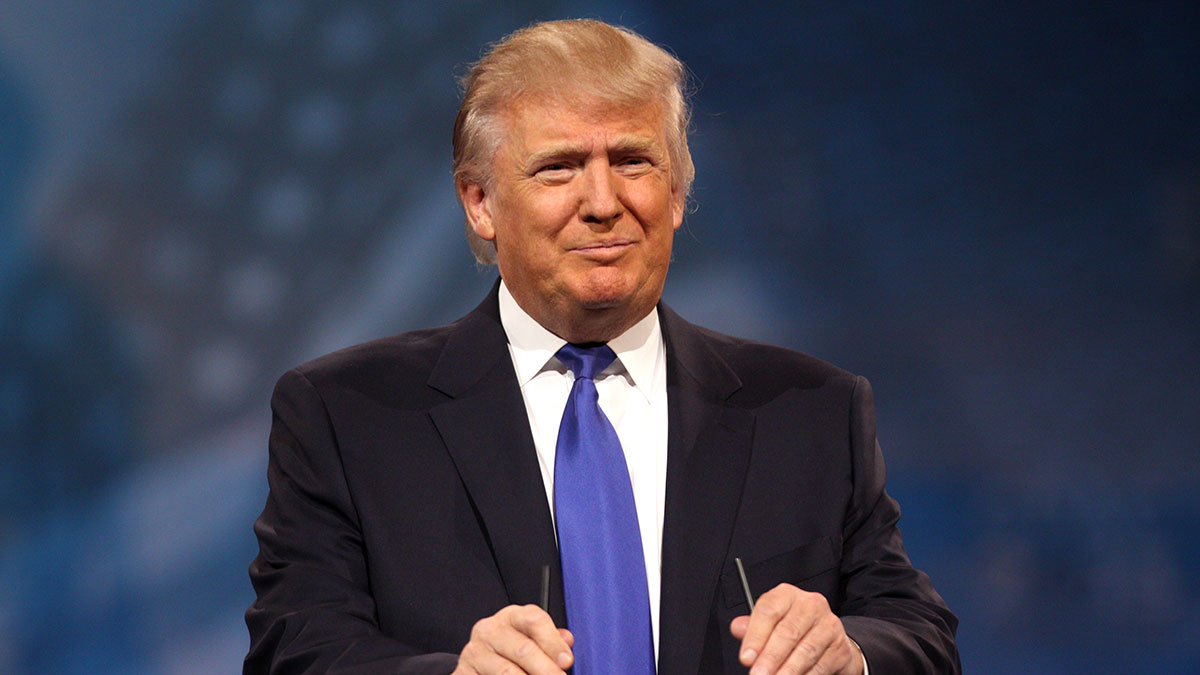Analyzing Donald Trump’s political success
 Supplied — Gage Skidmore
Supplied — Gage SkidmoreOn a breezy day in June 2015, the best escalator in New York City delivered the first candidate in modern U.S. political history whose name is colloquially prefaced by an article to an awaiting fandom ready to answer the tough questions and contribute to American discourse.
Only one part of that sentence is factually true. When the dust finally settled, the Donald’s blustery rhetoric was expected to fizzle and disappear, since no reasonable primary voter would look at Trump as a viable nominee. Eight months on and the Donald leads the Republican field, having received an estimated $1.9 billion in free media coverage since announcing. His name is as well known as the current U.S. president, and he arguably has greater name recognition than the likely Democratic nominee. Eight months after the beginning of what can generously be described as a gong-show campaign, I’m left trying to understand what enabled Trump to defy virtually every expectation, stick around, possibly win, and figure out what will happen to the Republican Party over the next year, four years, eight years and beyond. Through what will be a multi-part series I will explore both the Republican and Democratic primary races, discuss their implications and possible futures as the United States moves toward selecting the 45th president.
This article will focus on the conditions that enabled a candidate like Donald Trump to dominate a usually non-spectacular affair. Three key reasons: first, just over half of American voters belong to a particular party, in contrast to less than four per cent in Canada; second, the fact that several states allow crossover voting; and third, because the nature of a long campaign means that expectations about the longevity of Trump were inconsistent with the preferences of the general electorate.
First, because American voters by default choose a party to support, they necessarily become deeply invested in party loyalty; however, primaries have low turnout that’s not necessarily representative of the country at large. For example, 58 million people voted in the combined 2008 primaries, yet 120 million people voted for either Barack Obama or John McCain in the 2008 election. Primary voters are more motivated voters than average voters, and motivated voters tend to be ideologically rigid. As a result, when it comes to coalition building, primary contestants must become more ideologically extreme in order to appeal to various factions of the primary base. We see this across party lines, as Hillary Clinton supported NAFTA throughout negotiations in the 1990s, yet disavowed future free trade deals in 2016 because Bernie Sanders was making gains among manufacturing workers hurt by expanding free trade. This view is out of step with a majority of Americans, but helped Clinton shore up support in delegate-rich states like Ohio, Missouri, Pennsylvania, and Illinois. Trump is able to capitalize on extreme tendencies, by enthusiastically taking extreme positions that pander to many primary voters, but more importantly generate enough motivation to ensure they actually turnout and vote.
Second, Donald Trump is not conservative. Donald Trump is a populist, whose base does not rely on traditional Republican voters, but rather older, white Democrats, Republicans, and Independents in various states. Because of open primaries Trump is able to capitalize on this appeal without worrying about whether his supporters can actually vote, because party affiliation does not matter in open contests. This is noticeable when comparing open and closed primaries; for example, Trump was expected to win Louisiana by over 20 points. Because Louisiana is a closed primary, however, Trump wound up beating Cruz by a mere 3.5 points. This matters because Louisiana awards delegates proportionally, so Cruz is at no delegate disadvantage because he “lost” the state (rather, he and Trump each came away with 18 delegates).
Lastly, many editorialists, columnists, opinion writers, and commentators have lambasted the Republican establishment for not quashing Trump’s ambitions early on in the contest. For two reasons, however, the GOP was reasonably justified in ignoring Trump. First, Trump is self-funded, and lacked the organizational capacity that’s generally required to survive a yearlong campaign. Recognize that Trump has so far received the backing of 10 elected Republicans, compared to over 200 elected Democrats for Hilary Clinton, has done little fundraising on his own, and has very little organizational capacity in most states. Traditionally, this capacity is what swings elections regardless of the polling margin; it’s great to have large rallies but at the end of the day you need these people to show up and vote for you, and Trump lacked the mechanisms to do so. Second, Trump was expected to fizzle-out because his views are not consistent with the majority of the Republican base. Recall that I earlier said Trump draws his support from Independents, Democrats, and Republicans, as opposed to a singular and substantial majority of Republican voters. Expecting GOP primary voters to vote against someone who is not a Republican is a reasonable stance to take. Since voting began, Trump has received an average 35 per cent of the primary vote; this is not a majority, this isn’t even a margin-of-error-away from a majority, this is a limited minority. Therefore, given the expectation that Trump would fail on his own, other contestants focused on being the candidate behind whom voters coalesce when Trump inevitably falls. This is theoretically accomplished not by attacking Trump, but by positioning oneself as the next best option; in fact, the two candidates who repeatedly attacked Trump — Jeb Bush and Marco Rubio — collapsed and eventually dropped out.
The problem with this strategy, however, is that it relies on early coalescence. Because most GOP primaries and caucuses award their delegates proportionally, Trump has been able to garner a substantial lead because of a split opposition field, which has been unable to overtake his plurality lead in early states. At the present moment, we are now where GOP leaders hoped the field would be in January; Trump, facing off against Ted Cruz, the traditional evangelical candidate, and John Kasich, the traditional establishment candidate. However, Trump as the proverbial front-runner driving the narrative of the campaign makes it substantially more difficult to take him down.
The trait of democracy is that the people have a voice, and a right to exercise that voice. There is a substantial minority of voting Americans who have political views personified by Donald Trump, which has sustained his status as the front-runner. Over the course of the succeeding columns I will discuss the implications of a Trump candidacy for the GOP, should he be the nominee, as well as the country, should he win the general election. It is important to recognize that if there is a problem, Trump is the symptom, not the cause, and unilateral denunciations of the GOP, the RNC, or the American people are silly and unfounded lines of argumentation.
Trump may change the course of political history in the U.S., or he may be a political blip forgotten by the time the 2020 election rolls around. At the very least he supplanted the Super Bowl with the 2016 Primary as the most broadly entertaining television of the year.





Fantastic article. Intelligent and not short-sighted in terms of blind Trump bashing. Yes, he is a polarizing candidate with sometimes questionable views, BUT he is a player in the democratic process and must be treated as so. “It is important to recognize that if there is a problem, Trump is the symptom, not the cause, and unilateral denunciations of the GOP, the RNC, or the American people are silly and unfounded lines of argumentation.” A+++.